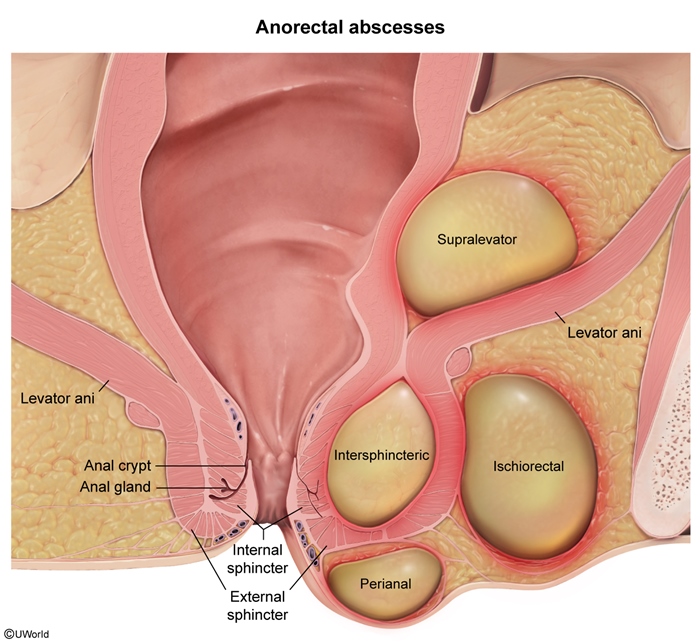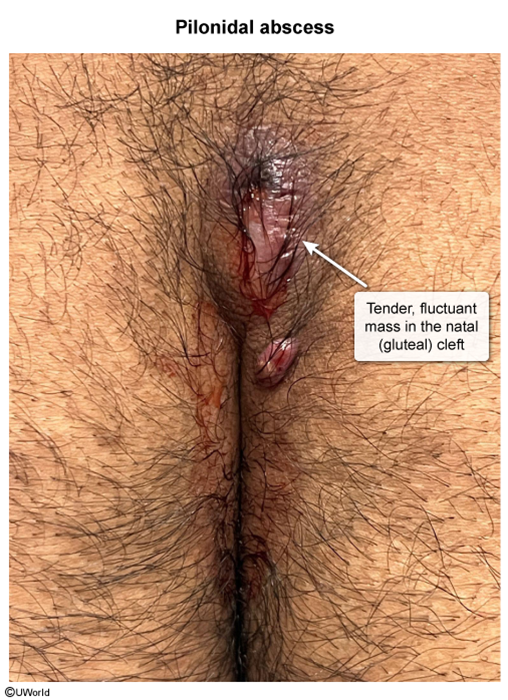Anorectal Abscess
Article Sections
Introduction
An anorectal abscess is a localized collection of pus within the perianal soft tissues or perirectal spaces, most often caused by anal crypt gland obstruction and infection. Severe pain in the anal or rectal area is the main presenting symptom. Anorectal abscesses vary in complexity based on their anatomic location (eg, perianal vs perirectal) but all require prompt incision and drainage to prevent further spread of infection and systemic illness.
Pathophysiology
The anal canal contains approximately 8-10 anal glands that are located within crypts at the dentate line. The majority of anorectal abscesses arise when debris overlying the crypt causes obstruction and subsequent bacterial overgrowth within the gland. Infection leads to subcutaneous inflammation and, eventually, the formation of a pus-filled abscess. Superficial abscesses in the perianal soft tissues are most common. However, infection can track deep into the perirectal spaces resulting in an intersphincteric, supralevator, or ischiorectal abscess (
Continue Learning with UWorld
Get the full Anorectal Abscess article plus rich visuals, real-world cases, and in-depth insights from medical experts, all available through the UWorld Medical Library.
Figures


Images
